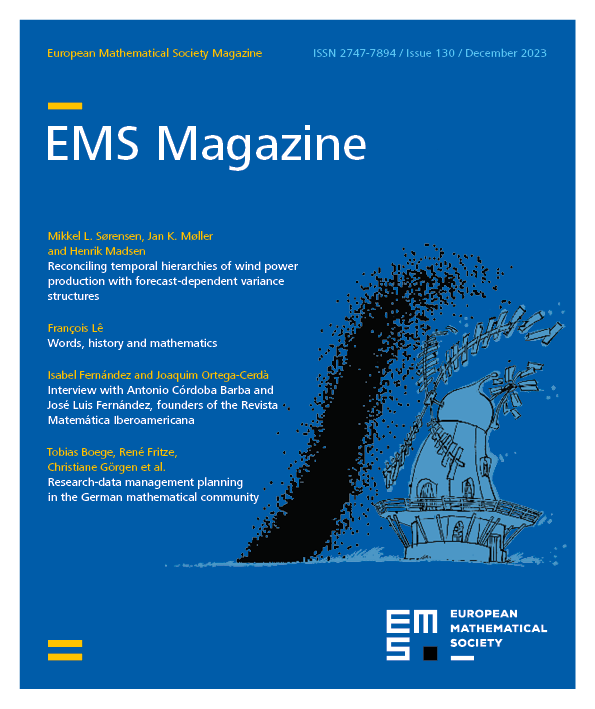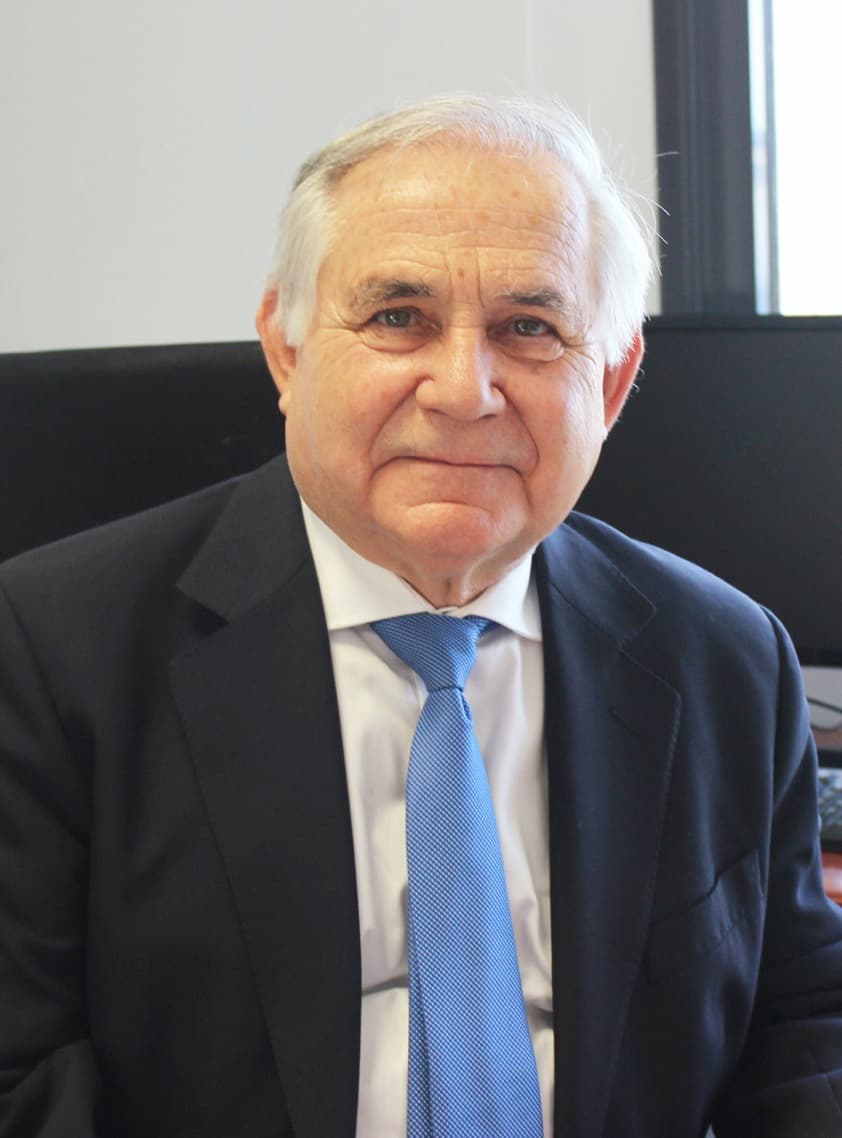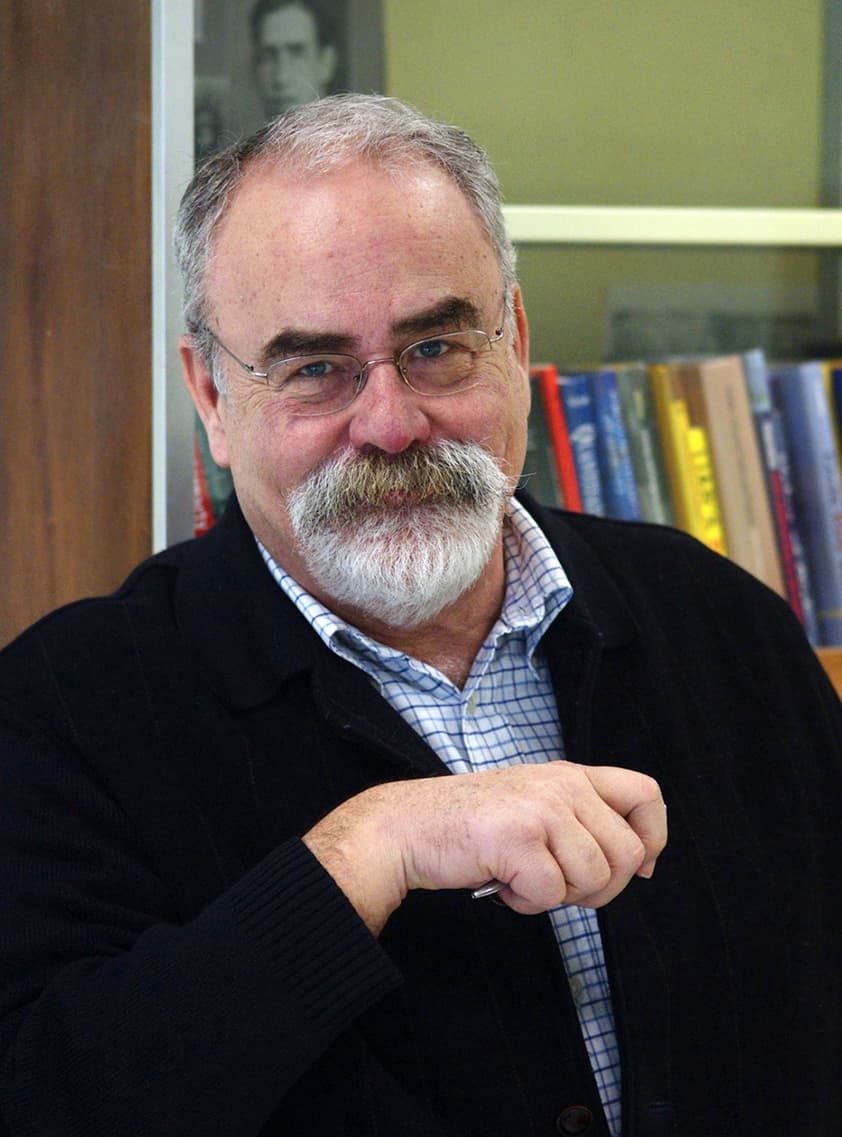Antonio Córdoba Barba and José Luis Fernández created in the 1980s the Revista Matemática Iberoamericana, a generalist research journal which has become a publication of international prestige. The Revista, now part of the EMS Press, has been connected to the RSME (Real Sociedad Matemática Española) for more than a decade. After more than thirty years leading the journal, both have recently left the directorship of the journal.
Antonio Córdoba Barba and José Luis Fernández.
©Laura Moreno / ICMAT and Pedro José Moreno
Isabel Fernández/Joaquim Ortega-Cerdà: How came the idea of creating the Revista Matemática Iberoamericana (RMI)?
Antonio Córdoba: At the end of the seventies Pedro Abellanas, director of the Jorge Juan Institute (CSIC, Consejo Superior de Investigaciones Científicas), asked me to prepare a project to relaunch the Revista Matemática Hispanoamericana, founded by Rey Pastor in the 1920s, which had been in decline.
My proposal to the Institute and the RSME was to create a journal with an independent editorial board of international character, formed by prestigious mathematicians, and with a budget that would allow to improve its layout.
The proposal was not accepted at that time, but was taken up again years later when José Elguero became President of the CSIC in 1983 and asked me to join his team of scientific advisors. The agenda of the first meeting of this Advisory Council included a decision on whether to maintain or eliminate the Revista. I had the opportunity to present my old plans and, to my surprise, not only Elguero, but also the rest of his advisors, offered me their institutional support to carry out the project. And when I was barely thirty years of age and with no publishing experience whatsoever, I found myself embarked on the ambitious task of creating ex novo a mathematical journal of international character and quality. What I did was to contact my mathematical friends (Charles Fefferman, Luis Caffarelli, Yves Meyer and Alberto P. Calderón, among others), who not only did not dissuade me from undertaking such an enormous project, but generously offered me their help, accepting to be part of the Editorial Committee, sending their own papers and asking for contributions. Without this help, RMI would not have been born.
In 1984 we had the first issue ready (in which there were contributions from, among others, two Fields Medal and two Wolf Prize winners). In the meantime, José Elguero had left the Presidency of the CSIC and the new team had some criticisms about the Revista, wanting to make changes in the editorial committee, which seemed dangerous to me, since I considered its independence to be very important. I was subject to serious pressure and, eventually, I was summoned to a meeting with both presidents, the president of the CSIC and the president of the RSME, which sounded like an ultimatum to me. But it so happened that at that time Yves Meyer and Charles Fefferman were visiting me, and so I went to the meeting accompanied by them, as well as by Miguel de Guzmán, and carrying with me the printed proofs of the first issue of the RMI. With that escort I only received congratulations from both presidents for the quality of the articles and there were no more inferences. I believe, in retrospect, that it was a key moment for the RMI project.
And, fortunately for me, in 1988 I made one of my best decisions in favor of the Revista: to invite Josechu for the co-direction.
IF/JOC: How were the beginnings of the Revista?
José Luis Fernández: Although the journal was formally linked to the CSIC and the RSME, it operated actually quite independently. This independence made it possible to develop the desired editorial line, but the institutional disengagement that it entailed made initial contacts with subscribers, distributors and even potential authors difficult.
Everything was very handmade: the layout was very tedious (the concept of “cut and paste” at that time was literal, with scissors and glue), and mailings took a long time. It was just Antonio and me, and the process was very time consuming.
AC: Perhaps somewhat optimistically, the project considered that, after a period of five years, the Revista should be financed by subscriptions (in fact, we achieved this earlier), but at the beginning we depended on CSIC funding and on the calls from the “Comisión Asesora de Ciencia y Tecnología” (public agency of the Spanish government) to which we applied for support. We had problems with the funding received and, after a conflict with the RSME, Pedro Pascual put us in contact with the Ortega y Gasset Foundation, which helped us financially in the early stages. Despite these initial problems, I always believed that, if we managed to consolidate the journal by publishing issues of a high scientific level, the funding problems would be solved and we would not depend on the support of institutions. This objective was finally achieved.
The initial location of the journal was on Serrano Street (Madrid), in the premises of the Spanish Confederation of Mathematical and Statistical Research Centers (of CSIC), which for a brief period replaced the Jorge Juan Institute. Exchanges with other journals were important, because they broadened the visibility of the RMI. Initially, the Mathematics Library of the CSIC benefited from them, but it did not take long for them to express their lack of interest, so they passed to the Mathematics Department of the UAM (Universidad Autónoma de Madrid). The relationship with the EMS led to their drastic reduction and now, in fact, the RMI has practically no exchanges.
IF/JOC: What was your motivation for creating the journal? What aspects were important to you about how the journal should be?
JLF: Our desire was to have a journal of a good level in Spain, contributing to the accreditation of our country within the international mathematical panorama, although our initial infrastructure was very precarious. The work of the editors in this aspect was fundamental. Everything worked thanks to contacts. Thanks to Yves Meyer, for example, we obtained a large number of high-level papers from members of the French school in his area, such as Ingrid Daubechies, Guy David (currently editor of the RMI), or Jean-Lin Journé.
AC: Although I have always appreciated the international character of mathematics, I did, like other members of my generation, feel pained by José Echegaray’s famous sentence that in mathematical science “there is no name that Spanish lips can pronounce without effort.” I believe that having an international journal produced here is a good presentation card for the Spanish mathematical community and benefits us all.
An aspect to which we also gave importance from the beginning was the aesthetics: to have a good typography, good paper, an identity sign… In definitive, to make it attractive so that it would become desirable for a mathematician to have an article in the Revista.
IF/JOC: Who were part of the initial team?
AC: As mentioned above, the work of the editors was fundamental: Alberto Calderón, who scientifically supported the quality of the project, Charles Fefferman and Yves Meyer, who were two pillars of the editorial committee from the beginning (Fefferman is still with us today, Meyer left the journal seven years ago).
Another fundamental person for the project was Antonio Ros, who has been editor since the beginning and was in charge of covering the area of Geometry. Terry Lyons, who joined the journal later on, also played a decisive role in getting RMI indexed in the Journal Citation Reports (JCR), facilitating motu proprio, together with other members of the editorial board, to be indexed at no cost.
JLF: We also counted on the indispensable collaboration of several people who helped us in the administrative and infrastructure management of the Revista, such as Caroline Bintcliffe, Pablo Fernández (who designed the current format of RMI) and Daniel Ortega (UAM), Domingo Pestana (UC3M, Universidad Carlos III de Madrid), and Antonio Gil, an administrative staff member of our department who helped us outside his working hours, even two years after his retirement.
IF/JOC: When did RMI become part of the EMS Publishing House?
JLF: It was around 2012. We had previously received offers from Springer and Birkhäuser to publish the Revista while maintaining its structure, but we refused them because it was not in our spirit to manage the Revista through a commercial publisher.
When the EMS was setting up the Publishing House, Marta Sanz-Solé, president of the EMS at the time, suggested contacting RMI. Manfred Karbe was responsible for the editorial and was very helpful.
As an anecdote, I will tell you that at the first meeting there was a big discussion about the color: whether to keep the initial green, as we wanted, or go to the blue proposed by the EMS. This is the harshest meeting that the journal has ever had in its history (laughs).
AC: But we finally conceded to change the color to the European Community blue, and it was a good decision because in exchange we were able to keep the format of the Revista.
JLF: The move to the EMS Publishing House had the great advantage of institutionalizing the Revista (at that time, in addition, the relationship with the RSME was made official through its general editor Guillermo Curbera), and we were able to focus solely on editorial work.
IF/JOC: Although RMI is a generalist journal, it has an important presence of topics related to Analysis; has this been a conscious or unconscious decision?
AC: We always intended to be universal, but in the beginning we had to rely on our scientific contacts to get good articles, and that ends up imposing a tendency. However, from the beginning we tried to have all areas of mathematics represented, and today the journal publishes on a wide range of topics.
JLF: To some point it is a natural phenomenon that if in the beginning there was a higher proportion of articles on a certain topic, these have attracted other papers on related topics. But we always believed that, for the quality of the Revista (perhaps not so much for the impact indices), it was best to have a generalist journal.
IF/JOC: RMI is currently an established journal in the impact rankings; what importance do you give to the impact index?
JLF: From the beginning it was clear to us that being in the JCR was important for the Revista, and we have always aspired for it to be positioned as well as possible.
AC: One must target very high, because if you aim at the middle, you end up going down. If you lower the standards, the quality and prestige of the Revista will degenerate, which is so difficult to recover from at a later stage. Our initial strategy was to establish a canon by requiring relevant articles from renowned mathematicians.
JLF: We have always opted for quality over quantity. In particular, in the early days we had to take risks, and we published issues with very few pages.
IF/JOC: What role do you think journals play right now, or will play in the future, in mathematics research?
AC: The role of journals has changed a lot. They used to be efficient means of communicating knowledge and research, but they are no longer so efficient because this is now better done by the Internet through web pages and the arXiv. The main contribution of good journals is to certify that the published works have been evaluated, are correct and contain relevant results obtained with innovative methods.
This function is very important, and is associated with the quality of the journal and its editors. The work of these is crucial, and it is often difficult to obtain good reports, because their preparation involves considerable work, which is not remunerated. I believe that we mathematicians have to become aware of this task and collaborate generously in it, since it is the best method invented for knowledge to progress and to do so on a solid basis. And that is the role of journals in this era, rather than the transmission of knowledge, because nowadays, due to the backlog, articles are published when they have already been circulating for several years.
IF/JOC: What do you think of the policies of open access and the proliferation of so-called “predatory journals”?
JLF: I think there has been an absolute degeneration of the system. Nowadays it is very easy to set up a journal, and one comes across journals with seemingly serious names that in reality have no refereeing process.
I believe in the philosophy of open access and that research should be easily accessible and free of charge to authors. I trust that quality journals are like vinyl records, they never go out of fashion. The role of good quality journals is going to be maintained, quartile algorithms apart, because good articles call for others.
IF/JOC: Both of you have just left the management of RMI after having been at the head of it since its beginnings. How do you see the present and the future of RMI?
JLF: Currently, the Revista is in very good health. The editorial work is something that takes a lot of dedication, but, fortunately, now the editors can focus on that and not worry about economic and administrative tasks.
AC: I, of course, am very attached to the Revista, and I am pleased to see it now directed by mathematicians whose work is so relevant and who are much younger than those who created it. I am sure that they will succeed in maintaining and improving the level of the RMI.
IF/JOC: We hope so! Thank you both very much. It has been a pleasure talking with you.
AC/JLF: Many thanks to you.
Acknowledgements. The EMS Magazine is grateful to La Gaceta de la RSME, to the Real Sociedad Española de Matemáticas, and to the authors, for the authorisation to publish this translation.
Cite this article
Isabel Fernández, Joaquim Ortega-Cerdà, Interview with Antonio Córdoba Barba and José Luis Fernández, founders of the “Revista Matemática Iberoamericana”. Eur. Math. Soc. Mag. 130 (2023), pp. 17–20
DOI 10.4171/MAG/156

